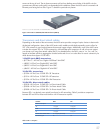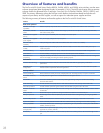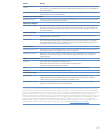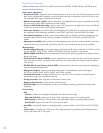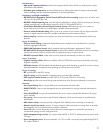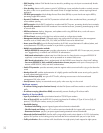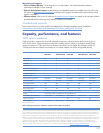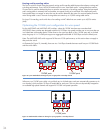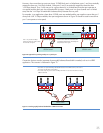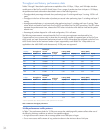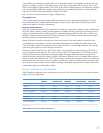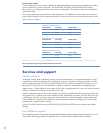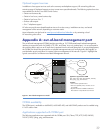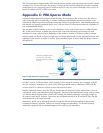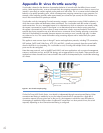
35
However, when more than two ports per 4-port 10-GbE block are in a linked state, ports 1 and 4 are statically
mapped to share one 14.4-Gbps channel, while ports 2 and 3 are statically mapped to share the other
14.4-Gbps channel. Thus, if only one port in a given channel is in a linked state, then that port operates at
wire speed and the other port uses no bandwidth. However, if both ports in a given channel are in a linked
state, then the 14.4 Gbps of bandwidth is balanced fairly between the two ports.
For example, in an application where three 10-GbE ports are needed and the user needs to ensure that port 1
always has a full 10 Gbps available, then port assignments shown in Figure 20 should be used to ensure that
port 1 can operate at wire speed.
Fabric Modules
14.4 Gbps
Channel
14.4 Gbps
Channel
1
4
2
3
F2 Chip
1
4
2 3
14.4 Gbps
Channel
14.4 Gbps
Channel
1
4
3
21
2
4
………………………………
…
14.4-Gbps
channel
14.4-Gbps
channel
14.4-Gbps
channel
14.4-Gbps
channel
10-GbE ports10-GbE ports
6600-24G switch
22
Port 1 can provide 10 Gbps
because it does not need to share
the channel with port 4
Ports 2 and 3 share this channel and the
trunked link balanced the 14.4-Gbps link
fairly between the 2 ports
8200zl switch8200zl switch
Figure 20: Approach for providing 10 Gbps on a specific port
Connection choices are also important where equally balanced bandwidth is needed, such as in a VRRP
application. This scenario is illustrated in Figure 21.
F2 Chip
1
4
2
3
F2 Chip
1
4
2
3
14.4-Gbps
channel
14.4-Gbps
channel
14.4-Gbps
channel
14.4-Gbps
channel
6600 switch
“Backup”VRRP “Master”
• Each trunk can provide 20-Gbps bandwidth because in the VRRP scenario, one router is
the owner and the other is the backup
• As a result, only one port in each 14.4-Gbps channel is in use since the trunks are using
different channels
Figure 21: Providing equally balanced bandwidth in a VRRP environment



